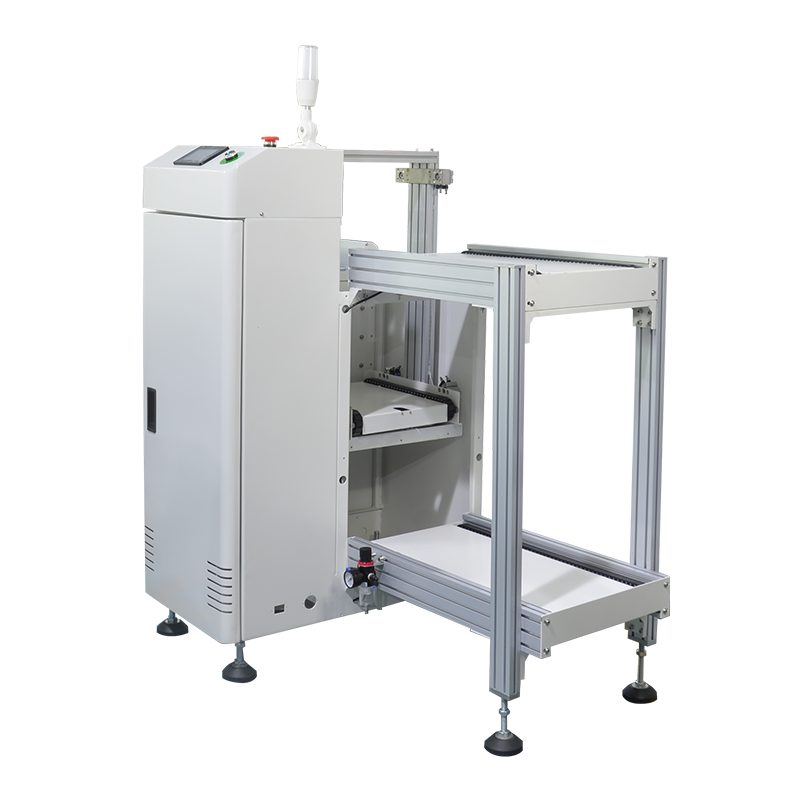Error de formato de correo electrónico
emailCannotEmpty
emailDoesExist
pwdLetterLimtTip
inconsistentPwd
pwdLetterLimtTip
inconsistentPwd


Unveiling the Marvels of SMT PCB Assembly Factories: Pioneering Innovation and Precision
In the realm of modern electronics manufacturing, SMT PCB assembly factories stand as beacons of innovation and precision. These facilities represent the culmination of cutting-edge technology, meticulous craftsmanship, and streamlined processes. Join us on a journey as we explore the intricate workings of SMT PCB assembly factories, uncovering their pivotal role in shaping the future of technology.
Understanding SMT PCB Assembly Factories: An Overview
SMT PCB Assembly: A Paradigm Shift
Surface Mount Technology (SMT) has revolutionized the electronics industry, offering unparalleled efficiency, miniaturization, and performance. SMT PCB assembly factories harness this transformative technology to assemble electronic components directly onto PCBs, paving the way for compact, high-density circuitry in a myriad of electronic devices.
The Evolution of Manufacturing: From Through-Hole to SMT
The evolution of manufacturing methodologies has been marked by the transition from through-hole assembly to SMT. Through-hole assembly, while effective, posed limitations in terms of size, cost, and performance. The factories have overcome these challenges, embracing the flexibility and scalability afforded by surface mount technology.
Core Operations of SMT PCB Assembly Factories
Component Procurement and Inventory Management
At the heart of SMT PCB assembly factories lies the meticulous procurement and management of electronic components. These facilities maintain extensive networks of suppliers to ensure a steady flow of high-quality components. Advanced inventory management systems track component usage, optimize procurement, and minimize production delays.
Precision Placement with Pick-and-Place Technology
Precision placement is a cornerstone of SMT PCB assembly, facilitated by state-of-the-art pick-and-place technology. These sophisticated machines swiftly and accurately position components onto PCBs with micron-level precision. The seamless integration of pick-and-place technology streamlines assembly processes, maximizing efficiency and productivity.
Soldering Techniques: Ensuring Reliable Connections
Soldering is a critical step in SMT PCB assembly, where components are securely attached to PCBs through molten solder. Reflow soldering and wave soldering are common techniques employed in SMT PCB assembly factories. These methods ensure robust electrical connections while minimizing thermal stress on delicate components.
Quality Assurance: Upholding Standards of Excellence
Quality assurance is paramount to maintain the highest standards of product quality and reliability. Automated inspection systems, such as AOI and X-ray inspection, meticulously scrutinize assembled PCBs for defects or irregularities. Rigorous testing protocols ensure that only flawless products leave the factory floor.
Innovations Driving Excellence in SMT PCB Assembly Factories
Integration of Robotics and Automation
The factories are at the forefront of automation, leveraging robotics to enhance efficiency and precision. Robotic arms work seamlessly alongside human operators, performing repetitive tasks with unmatched speed and accuracy. This integration of robotics optimizes workflow efficiency and ensures consistent quality across production lines.
Advancements in AI and Machine Learning
The integration of artificial intelligence (AI) and machine learning (ML) is revolutionizing SMT PCB assembly factories. AI-driven algorithms analyze vast datasets to optimize production processes, predict equipment maintenance needs, and detect defects in real-time. This predictive intelligence enhances productivity and minimizes downtime, driving continuous improvement in factory operations.
The Impact of SMT PCB Assembly Factories Across Industries
SMT in Consumer Electronics: Powering Innovation
Consumer electronics rely heavily on SMT PCB assembly for their compact form factors and high-performance capabilities. From smartphones and tablets to smart home devices and wearables, the factories enable manufacturers to deliver cutting-edge products that enhance the lives of consumers worldwide.
SMT in Automotive Electronics: Driving Innovation
The automotive industry benefits greatly from SMT PCB assembly, where advanced electronic systems are integral to vehicle functionality and safety. From engine control units (ECUs) to infotainment systems and autonomous driving technologies, the factories play a vital role in driving innovation and reliability in automotive electronics.
Challenges and Opportunities in SMT PCB Assembly Factories
Supply Chain Resilience: Navigating Uncertainty
Global supply chain disruptions pose challenges to SMT PCB assembly factories, highlighting the importance of resilience and adaptability. These facilities must diversify sourcing strategies, optimize inventory management, and establish robust contingency plans to mitigate the impact of unforeseen disruptions.
Sustainability: Embracing Responsibility
Sustainability is an increasingly important consideration for factories, prompting initiatives to minimize environmental impact and promote responsible manufacturing practices. From energy-efficient production processes to eco-friendly materials sourcing and waste management strategies, these facilities are embracing sustainability as a core tenet of their operations.
Conclusion: Charting the Course Forward
SMT PCB assembly factories represent the epitome of innovation, precision, and efficiency in electronics manufacturing. By embracing advanced technologies, prioritizing quality assurance, and adapting to evolving industry trends, these facilities are poised to lead the way in shaping the future of technology. As we navigate the complexities of a rapidly changing world, the factories remain steadfast in their commitment to excellence, driving progress and innovation across diverse industries.

